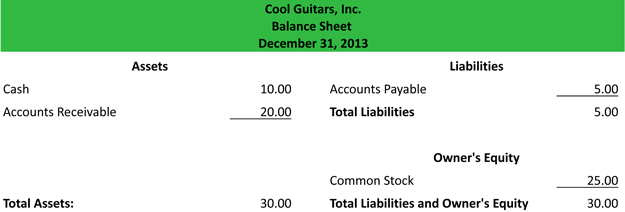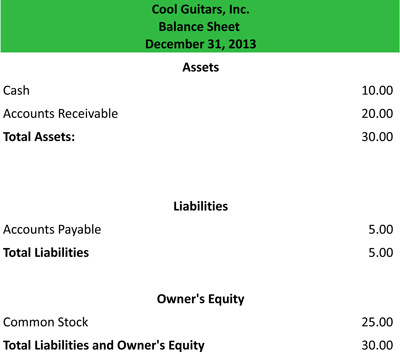Definition: A balance sheet is one of four basic accounting financial statements. The other three being the income statement, state of owner’s equity, and statement of cash flows. The balance sheet uses the accounting equation (assets = liabilities + owner’s equity) to show a financial picture of the business on a specific day. In other words, a balance sheet lists all of the assets that a company owns as well as the debts owed by the company and the owner’s interest or ownership share in the company.
Assets are listed separately first and liabilities and owner’s equity are listed together second. Think about the accounting equation. Assets = Liabilities + Owner’s equity. Assets have to total the sum or liabilities and owner’s equity. This is where the “balance” in balance sheet comes from. Assets have to balance with liabilities and owner’s equity.
What Does Balance Sheet Mean?
Balance sheets can be presented in two different formats: account format and report format. Account format goes from right to left with assets on the right and liabilities and owner’s equity on the right. Report form is vertical with assets on the top and liabilities and owner’s equity on the bottom. You are probably thinking, “Great, this is another thing to memorize.”
Don’t worry. It’s easy to remember. Think of the account format like the accounting equation– left to right. Think about the report format like a report or spreadsheet–top to bottom. Nothing to it! Here are two examples.
Account Balance Sheet Example

Report Balance Sheet Example

Download this accounting example in excel.
Remember what I said about the balance sheet being a picture of a company on a specific day? Well, that’s exactly what it is. It’s a snapshot of all the assets, liabilities, and equity that the company owns on that specific day. It’s like a photo taken on that day in the life of the company. The balance sheet changes everyday that new transactions are posted, so every day’s picture will be a little different.
Just like looking through an old family photo book, looking at old balance sheets gives you a history of what the company looked like back on those dates.


